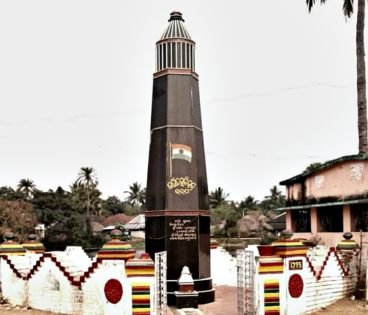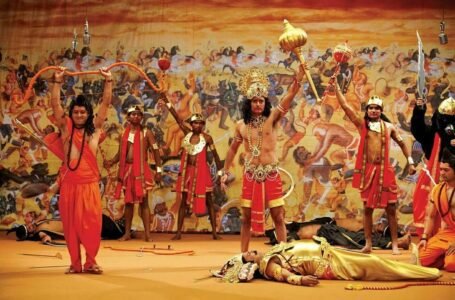Eram Massacre the Second Jallianwala Bagh Massacre: Orissa’s Silent Struggle

-Bhoomee Vats
India’s quest for independence has been defined by innumerable acts of sacrifice, resilience, and collective strength. While many such events have gained national attention, some are overshadowed by more notable equivalents. The Eram Massacre of 1942, often known as the “Jallianwala Bagh of Odisha,” is a sorrowful but significant event that demands more attention and commemoration. This massacre occurred during the Quit India Movement and represented both the savagery of British repression and the indomitable spirit of the Indian people.
Though less well-known nationally, the Eram Massacre shows how even small towns played an important role in India’s freedom movement. Inspired by Gandhi’s call to civil disobedience, the people of Eram—ordinary farmers, labourers, and women—rose against colonial oppression. Their horrific killings at the hands of British police highlight both the brutality of the system and the strong desire of ordinary Indians for freedom. Remembering this episode honours the bravery of these unsung warriors.
The Historical Background
In August 1942, Mahatma Gandhi initiated the Quit India Movement, a mass demonstration calling for the end of British colonial rule. The movement arose in response to the Cripps Mission’s failure, as well as the constraints of World War II on the British Empire. Gandhi’s piercing call of “Do or Die” sparked a surge of resistance across the country, inspiring people from every aspect of life to join the liberation cause.
Odisha, previously known as Orissa, was not immune to this wave. Rural regions, despite their being remote, responded equally enthusiastically. Nationalist fever spread across tiny towns and villages, especially Eram, a small village in Odisha’s Bhadrak region that was largely unknown. In Eram, the beliefs of the Quit India Movement spread among the peasants, who held secret meetings, distributed nationalist tracts, and rallied support for the cause. Despite restricted contact and strict surveillance by colonial officials, the inhabitants were resolved to join in the fight for liberation, transforming their peaceful town into an icon of resistance.
A Village Turned Battleground for Freedom
Eram was a peaceful settlement encircled by lush forests and water basins. Its geographical remoteness made it a perfect location for secret political activity and covert meetings away from the British administration’s prying eyes. Freedom fighters and activists frequently used Eram as a base for organizing and mobilizing.
On September 28, 1942, a big crowd, reported to be over 3,000 people, assembled in Eram for a protest assembly against British administration. This gathering was planned by local leaders, primarily Kamala Prasad Kar, who was actively involved in spreading Gandhian values and the Quit India movement in the region. The purpose was to encourage people to join the movement, raise awareness, and oppose the colonial authorities.
Eram’s Dark Hour
The meeting that took place in Eram was calm and nonviolent. Villagers from all regions of Bhadrak and its neighbouring areas banded together in a spirit of camaraderie and defiance. However, the gathering did not go undetected. Local British authorities were frightened by such a big gathering in a rural area, fearing it would launch a larger uprising.
Kunjabihari Mohanty, the District Superintendent of Police, led a group of armed officers to the scene. Without alerting or trying to disperse the mass of people peacefully, the police opened fire on unarmed individuals. The layout of the location, with few exits and enclosed fields, confined the attendees, making escape practically difficult.
Within seconds, 29 individuals were killed on the scene, and more than 50 were seriously injured. Among the martyrs was Parbati Giri, a young woman who became known as the “Mother Teresa of Western Odisha” for her charitable work but was already a notable freedom fighter at the time. Many of the deceased were impoverished farmers, women, and youth – regular people who dared to speak up for India’s independence.
How the slaughter was carried out, sudden, harsh, and without provocation, was strikingly similar to the Jallianwala Bagh massacre of 1919. The Eram Massacre, like Jallianwala, was a mass massacre in a restricted place that targeted peaceful villagers, serving as a striking reminder of colonial cruelty.
Consequences and Repercussions
The immediate effect of the massacre was one of horror and sorrow throughout Odisha. While the British attempted to hide news of the occurrence, it quickly spread via underground routes, nationalist newsletters, and eyewitness testimonies. The massacre fuelled anti-British sentiment in the region and reenergized Odisha’s freedom struggle.
Several significant outcomes followed:
- Wider Mobilization: The massacre sparked increased engagement in the Quit India Struggle across Odisha. People from adjacent towns and villages organized protest marches, strikes, and boycotts in response to the incident’s severity.
- Arrests and Enforcement: British authorities responded by intensifying restrictions, arrests, and abuse of suspected nationalists. Kamala Prasad Kar, along with other leaders, was captured and imprisoned. Many people were compelled to go underground.
- Memorial and Remembrance: Although the incident received little national media attention at that moment, local efforts were made to remember the martyrs. Yearly gatherings, local tributes, and community commemoration events helped to keep the tragedy’s memory alive.
Historical Legacy and Remembrance
Despite its historical value, the Eram Massacre was largely ignored in conventional Indian history textbooks for decades. Only in recent years has there been a renewed interest, particularly among regional scholars, educators, and political figures in Odisha.
A martyrs’ memorial (Shaheed Stambha) presently exists at the slaughter site in Eram. The memorial commemorates the 29 lives destroyed and has become a pilgrimage destination for those seeking to pay tribute to Odisha’s unsung liberation fighters. In 2003, the Odisha government designated the Eram Massacre as a historical landmark. Educational initiatives and public awareness efforts have subsequently been launched to educate future generations about this pivotal chapter in India’s freedom movement.
Conclusion
The Eram Massacre is a chilling reminder of the price of India’s independence. It is not simply a reminder of British brutality, but also a testimony to the bravery of regular people who stood up against oppression in small, overlooked areas of the country. The 29 martyrs of Eram did not carry weapons or promote violence; instead, they fought for freedom and justice.
As we commemorate India’s freedom struggle, it is critical to remember events such as the Eram Massacre, which show that the struggle for independence was not restricted to a few cities or leaders, but was a truly pan-Indian movement powered by the courage and selflessness of tens of thousands from every region.


